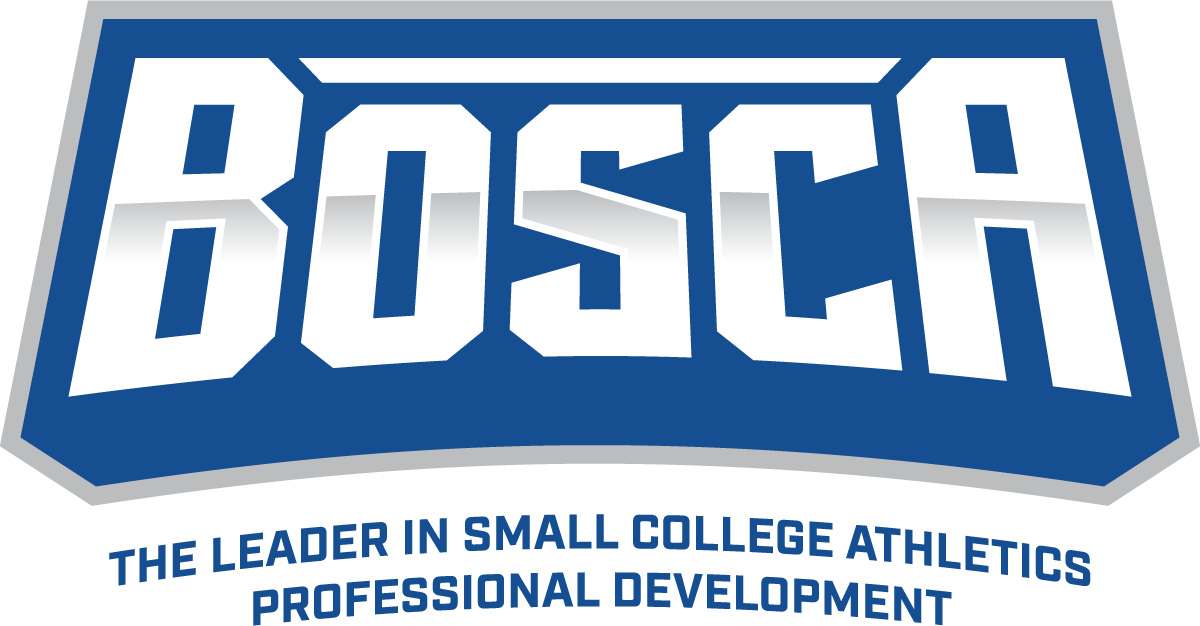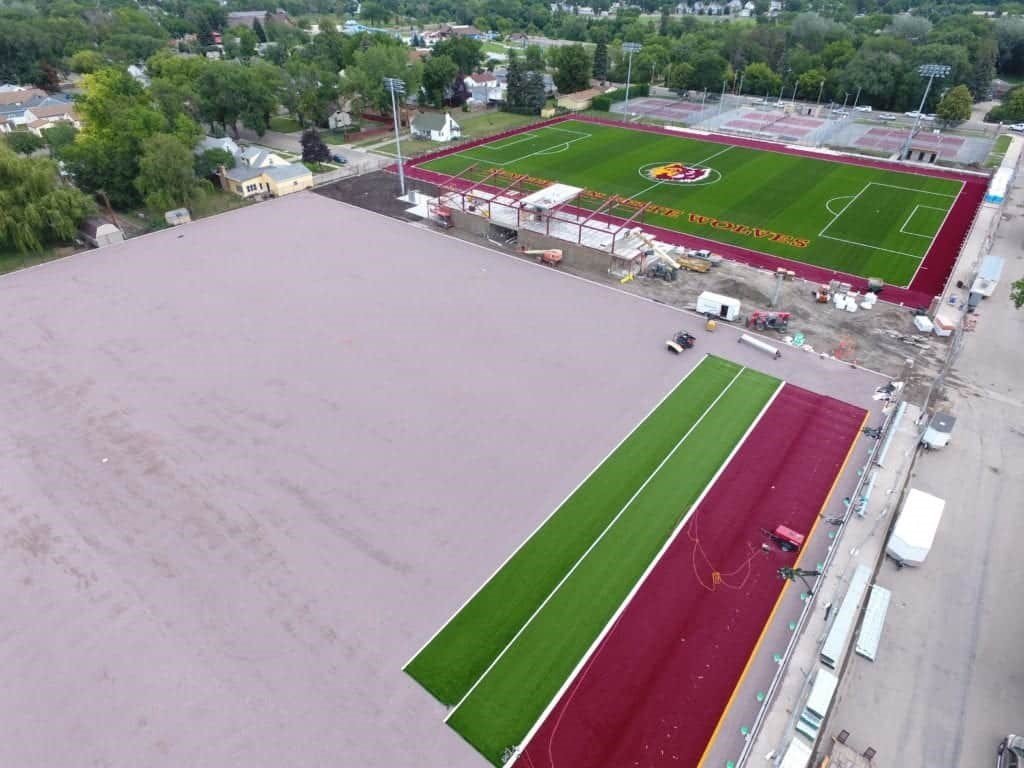Planning a Turf Field Project
5 Factors to Evaluate When Considering a Turf Field Project
As many administrators face the present-day uncertainty with campus closings and sport cancellations, focusing on facilities right now is not at the top of everyone’s priority list. However, as we all know, the fall sports seasons are still just around the corner and the facility enhancements that were needed a month ago will still be there when normalcy returns across the country.
Spending 15+ years in collegiate athletics administration at the D1, D2 & NAIA levels, I have gained a unique understanding of the issues facing athletic directors and university leadership. Additionally, as a proud sponsor of the Business of Small College Athletics, I have had the opportunity to visit with many of you about your questions regarding facility projects on campus, specifically relating to artificial turf. I was asked to write a blog post that hopefully will give insight into the process and provide assistance as you plan for your next field project.
Five Factors to Evaluate When Considering A Turf Field Project
1. “No One Wants to be Sold”
–
I hate being referred to as a salesman. It should be the turf representative’s
job to provide you with complete data and information to help you make the best
decision possible for your program…not to try and sell you. No One Wants to Be
Sold.
The waters in the turf industry
can be very murky. Every company or salesperson has aspects to their product
that they will try to push as differentiators or convince you these differences
make their turf the greatest and best. The key here is for administrators to be
able to sift through the sales spin and focus on data, research and product
specifications. I like to tell people to focus on the science and not the spin,
making sure the research and data you are provided has been produced by a
third-party, was peer-reviewed, and ideally published in an accredited journal
or site. Many companies will provide information or reports to support their claims,
but some quick digging and you will find that the research was conducted
internally or didn’t pass peer-revision and wasn’t published. The debates can
get heated when referencing safety studies (especially pertaining to
concussions and if a pad is needed or not), GMAX testing, field softness, etc.,
so make sure and do your homework on the information you have been provided and
visit with people you trust to give you unbiased feedback.
2. “It’s Not Just Fiber and Rubber”
– I hear the statement, “It’s all just fiber and rubber, and all turf is
made in the same place anyway.” In fact,
I personally used this phrase many times before making the transition into the
artificial turf world. While there is some truth to that statement, as a large
volume of turf is produced in the Calhoun/Dalton, Georgia area, there are some
striking differences in the turf systems produced by different manufacturers.
This topic point could be a 30-page paper, but there are a few main specifics
that you can examine to help you decide which manufacturer you want to move
forward with.
a. Fiber Performance Index
- As part of the
Labosport Certification Program, the Fiber Performance Index – FPI, establishes
an “index” – a rating or score of an artificial turf fiber to help prospective
turf buyers understand and weigh the individual qualities of a turf fiber. FPI
provides a comparative measuring tool to help architects, facility owners and
operators make the right artificial turf selection from a wide number of
options. FPI was designed by Labosport to quantify the key aspects of a fiber
that are most important to those purchasing a sports field. The higher the score,
the better. If a turf company is hesitant to give you their fiber performance
index rating, then likely the fibers they are presenting did not test well and
should be avoided.
b. Warranty
– Insist on the turf company providing
you with a written, pre-paid and third-party insured warranty. This is more
expensive for a company to provide so is not always offered by all
manufacturers. A typical turf system will come with an 8-year warranty, with
only one or two products on the market offering a 10-year warranty. Do not fall
for the handshake and a wink deal for an extended warranty. If the warranty is
not pre-paid and third-party insured, you run the risk of huge potential
problems if the company you are dealing with goes bankrupt or doesn’t honor
their warranty. Turf systems typically need to have passed independent testing
and product validation to offer this.
c. Infill Amounts & Ratios
– Make sure
as you are comparing turf systems, that you are given specified infill amounts
and what sand/rubber ratio you are being guaranteed. It is more expensive to
provide higher infill amounts than to produce fiber, so you will want to
understand the differences. Additionally, if you have the proper infill amounts,
you may not need a pad and could save a substantial amount on your project.
This is a point that you will want to do a considerable amount of research on
to have an adequate understanding of the differences in turf systems and their
claims.
3. Make Sure You Know Who Will Be Performing the
Actual Work on Your Project
–
The company/crews doing the base work and
installation are as important as the product itself. Ask the turf company to
identify the team that will be the ones on-site actually performing the work.
It can be common for a company to sell the turf and then sub-out the project. Some
companies that claim they will handle your project from A-Z have been known to
sub-out work. This can create issues if the crews on your project are
inexperienced or don’t uphold the expected standards for your program. These
crews will be on your campuses and around your student-athletes, so you will
want to know exactly who you are dealing with.
I like to tell potential clients to view the partnership as an 8-year marriage. Make sure you are very comfortable with the company you are entering into a relationship with. Will they honor what they tell you? Will they be there if needed for possible last-minute repairs? Will they come alongside you and your program to help support outside of just installing a field?
4. Go Beyond the Provided References
–
Just as you would when hiring an integral member of your staff, dig beyond the
provided references given. Like all others, the references provided will
obviously give glowing reviews. Find out what projects each company completed
and focus on customer service after the sale, how they handled the warranty and
client satisfaction with the product. It is also important to understand that
this is still construction and construction oftentimes does not always go as
planned. Regardless, general themes and points will repeat themselves and you
will be able to get a clearer picture of the company and product.
Don’t always be swayed when a company tells you that NFL teams play on their turf. There are some cases where the company pays the team for that right with the goal to be able to use it for marketing. A great point to focus on is to find similar programs to yours and get your colleagues input on their process, product used and how their experience went. You can also usually find out easily which collegiate programs are using what turf system, if you want to incorporate that into your decision making. This can be good measuring stick in terms of product, but just because a company has installed a field at a certain Power 5 school, doesn’t mean that those same crews are installing yours. That is where Point 3 comes back into play.
5. Understand Your Procurement Options –
Hands
down, navigating the procurement process can be the most frustrating aspect of
a project for administrators. It is not uncommon for two different public
universities in the same state to have their procurement offices offer
completely different mandates/policies on procurement. I have personally seen a
project cost unnecessarily escalate by more than $100,000 because of
procurement interpretation. This can be especially frustrating for athletics
departments that are having to fund the project through donor contributions and
where funds are tight.
Most states allow for synthetic
turf and track projects to be procured through a Cooperative Purchasing
Agreement. In fact, your organization is likely already buying things like
supplies, buses, computers, etc. from one of these cooperatives. Buying turf
and track products can be just as easy as buying a computer, as all costs and
services are identified. This also includes the construction services, which
can be a difficult part of the process for procurement departments to
understand. The benefits of going through a cooperative purchasing agreement
provide a simplified process, the guarantee of getting the best value by
leveraging economies of scale, the ability to get the product you want
installed by the company you want, and ideally a less time-consuming process
for you, as an administrator, with many items on your plate.
The cooperative purchasing
process satisfies bid laws and procurement requirements for most states. In
full disclosure, this can be very difficult for campus procurement officers to
understand or accept, so it is important to have done your homework before
presenting this option. It seems to be counter intuitive for some that you will
receive a better price from purchasing through a coop than through the
traditional RFP process, however, that is oftentimes the case. There are some
great resources available pertaining to cooperate purchases that I am happy to
pass along.
I hope that some of the points discussed may be of assistance to you as you navigate the process for your current or next project. Please feel free to reach out to me with any questions, or if I can be of assistance in any way.
Brian Morris
Vice President – Professional & Collegiate Operations
Mammoth Sports Construction
Mobile: (816) 605-5262
Brian@MammothTurf.com


